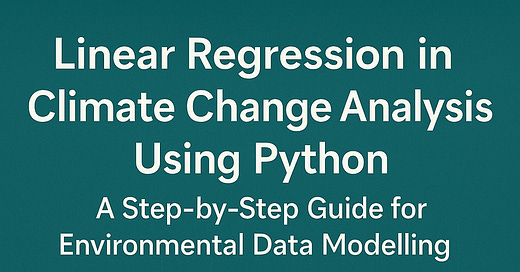Linear Regression in Climate Change Analysis Using Python: A Step-by-Step Guide for Environmental Data Modeling
This article demonstrates how to apply linear regression in Python to analyze the relationship between greenhouse gas concentrations and global temperature, enabling readers to model, interpret, and visualize key climate trends for research and policy-making.
1. Introduction
Climate change is the defining scientific and policy challenge of the 21st century. Whether we seek to understand the drivers of global warming, forecast future climate scenarios, or inform effective mitigation and adaptation policies, one thing is clear: robust, quantitative analysis is vital. At the core of many climate science investigations is the need to quantify how changes in one environmental variable (such as atmospheric carbon dioxide, CO₂) are associated with changes in another (such as global mean temperature). Here, linear regression offers a transparent, interpretable, and statistically grounded method for uncovering such relationships.
In this article, we will walk step-by-step through the application of linear regression to climate change data using Python. We’ll cover theoretical background, data preparation, modeling, diagnostics, visualization, and forecasting—using accessible, open-source tools (pandas, numpy, matplotlib, seaborn, scikit-learn). The guide concludes with a full, end-to-end code example that you can adapt to your own climate datasets.
Keep reading with a 7-day free trial
Subscribe to AI, Analytics & Data Science: Towards Analytics Specialist to keep reading this post and get 7 days of free access to the full post archives.




